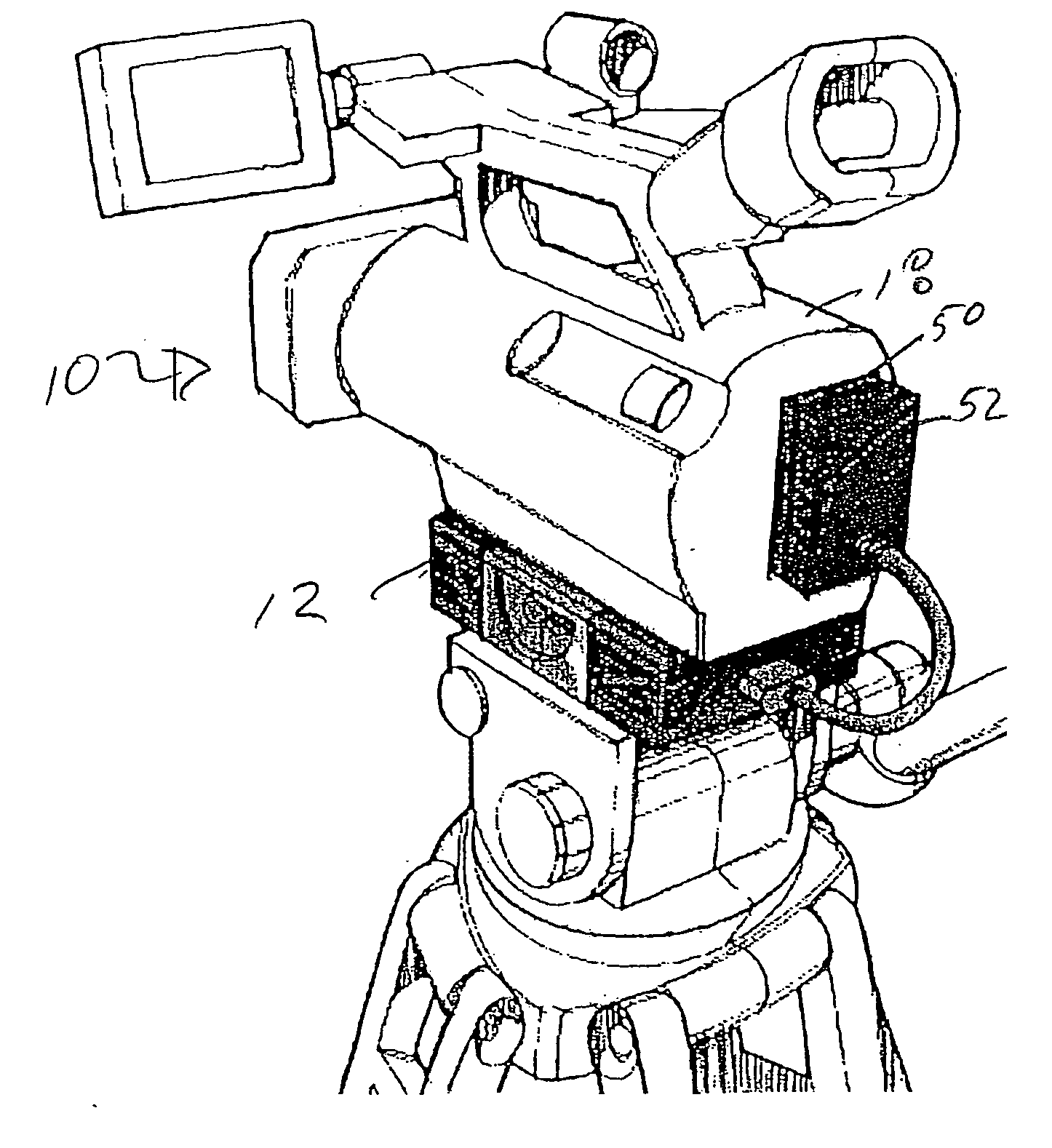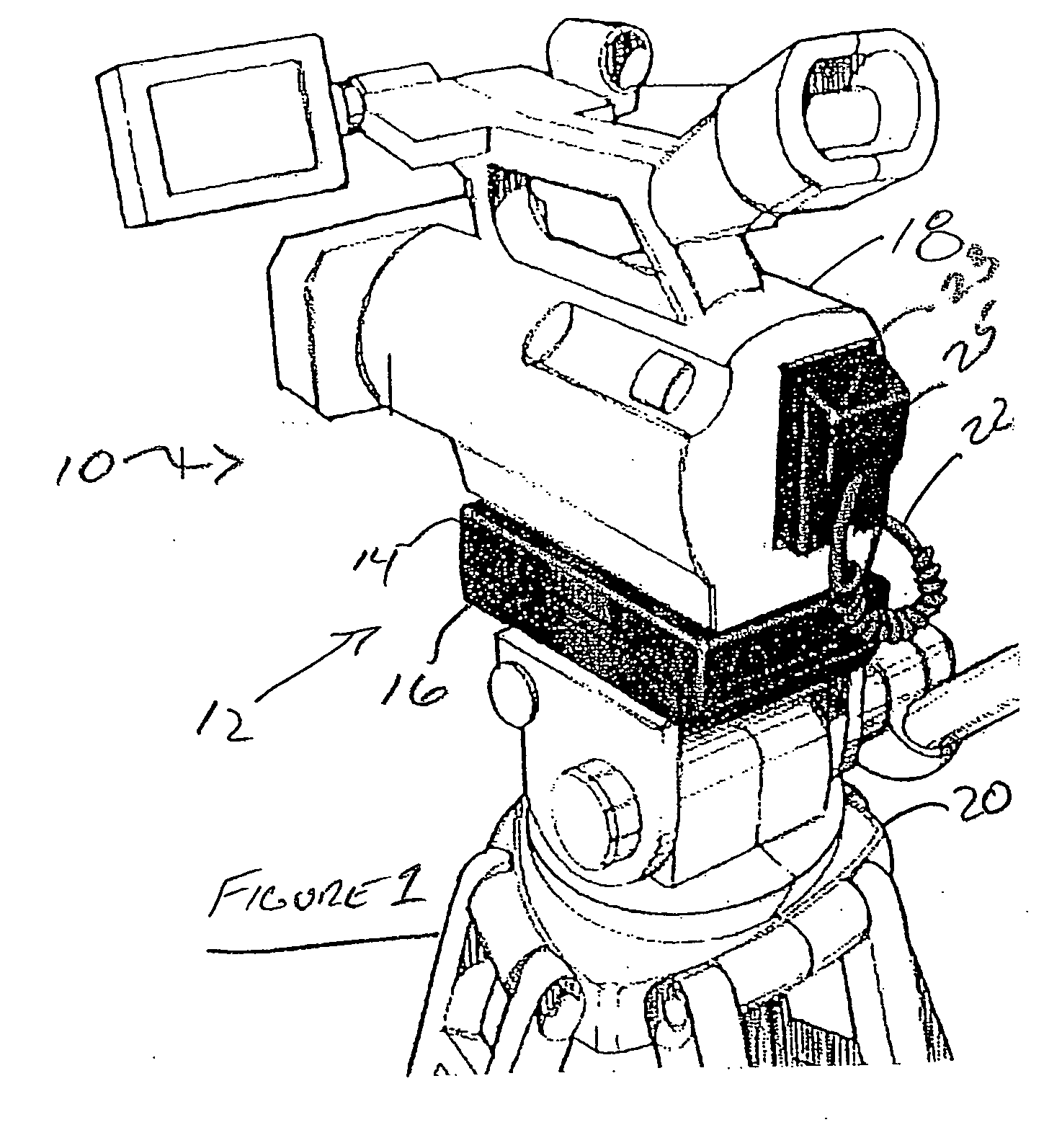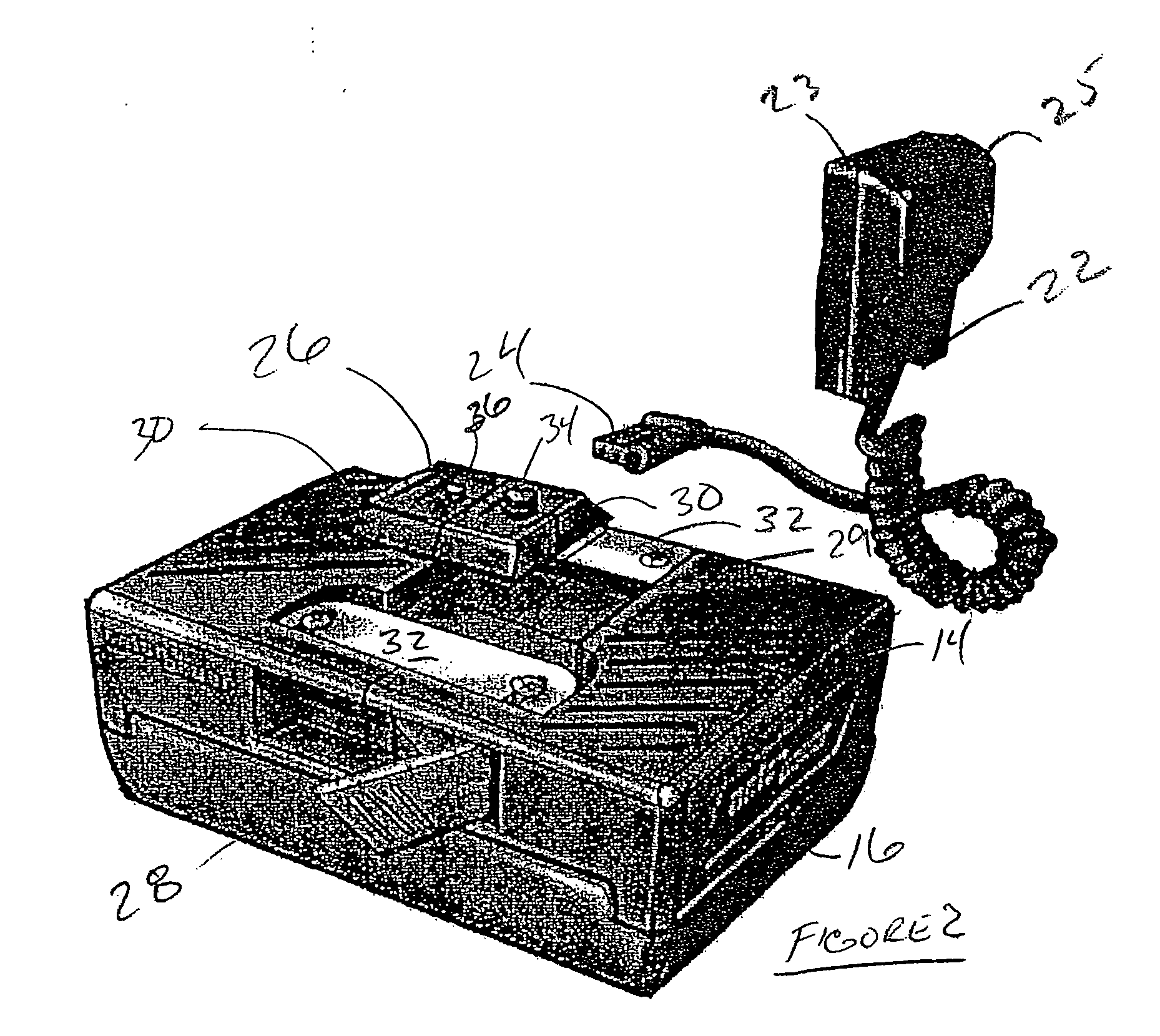Camera system and power supply for optical recording devices
a power supply and optical recording technology, applied in the field of ergonomic camera system and power supply for optical recording devices, can solve the problems of physical small batteries generally provided with these cameras, video cameras commonly require 50% of the power that earlier cameras 600% larger would consume, and the weight distribution of optical recording devices is not reduced in similar proportions. , to achieve the effect of improving the ergonomics of an electrical device and improving the weight distribution of an optical recording devi
- Summary
- Abstract
- Description
- Claims
- Application Information
AI Technical Summary
Benefits of technology
Problems solved by technology
Method used
Image
Examples
Embodiment Construction
[0050] Known video cameras, both the hand-held variety and the larger, professional video cameras, are known to have a bottom, planar surface that is devoid of any structural or operational features, with the exception of a threaded bore and a positioning hole. It is also well known that the threaded bore and positioning hole that are defined on the bottom, planar surface of typical video cameras are utilized to mount the video cameras to pan and tilt heads / tripods. In practice, known pan and tilt heads / tripods are themselves equipped with a threaded stud, or the like, for selective and threaded engagement with the video camera's threaded bore, as well as having a location post for engagement with the positioning hole.
[0051] Despite the advancements in the video camera art over the years, which have added an ever-increasing host of additional features to video cameras, such as flip-out observation / preview screens, a plurality of editing buttons and the like, it will therefore be re...
PUM
 Login to View More
Login to View More Abstract
Description
Claims
Application Information
 Login to View More
Login to View More - R&D
- Intellectual Property
- Life Sciences
- Materials
- Tech Scout
- Unparalleled Data Quality
- Higher Quality Content
- 60% Fewer Hallucinations
Browse by: Latest US Patents, China's latest patents, Technical Efficacy Thesaurus, Application Domain, Technology Topic, Popular Technical Reports.
© 2025 PatSnap. All rights reserved.Legal|Privacy policy|Modern Slavery Act Transparency Statement|Sitemap|About US| Contact US: help@patsnap.com



